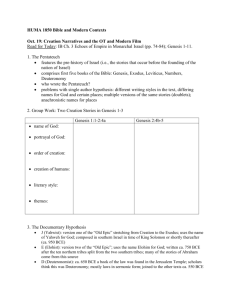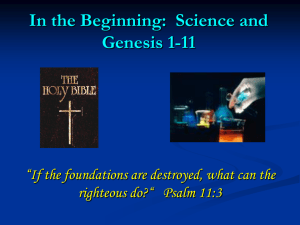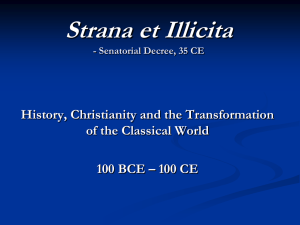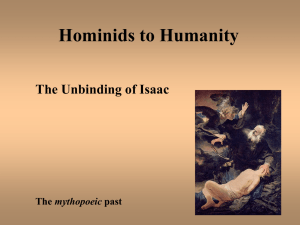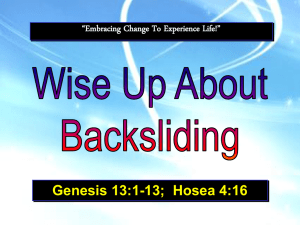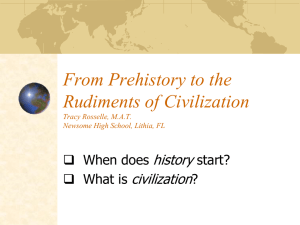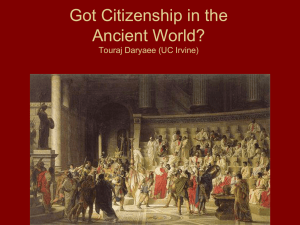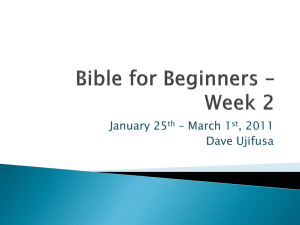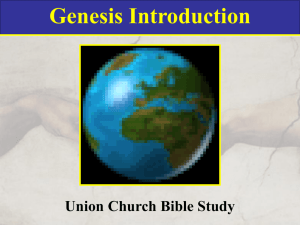GenesisIntro - Michael Sudduth
advertisement
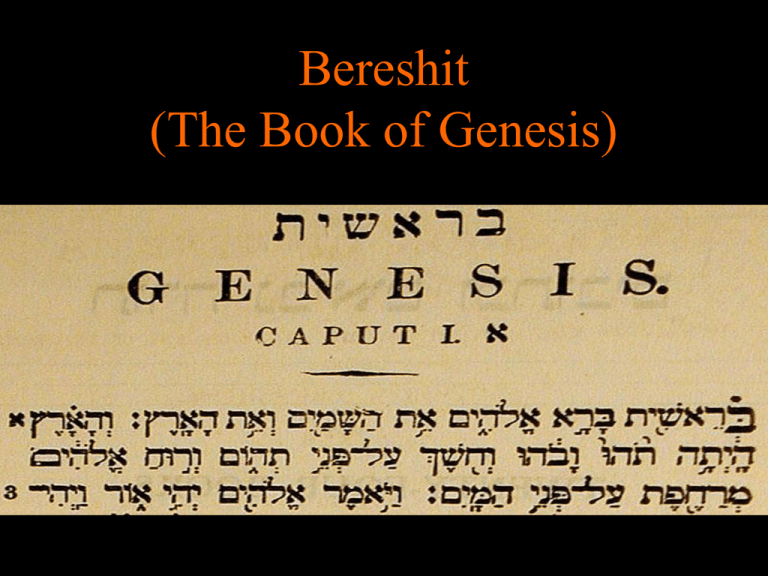
Bereshit (The Book of Genesis) Basic Facts about Genesis Genesis is the first book of a larger literary unit called the Torah (law) or Pentateuch (5 Books): Genesis (Bereshit) Exodus (Shemot) Leviticus (Vayikra) Numbers (Bamidbar) Deuteronomy (Devarim) The Torah is the first of the three larger literary units that constitute the Tanakh or Hebrew Bible, the others being the Nevi’ium (the Prophets) and Ketuvim (the Writings). The three books constitute what Christians call the Old Testament. The Torah tells a story spanning from the creation of the world to the death of Moses, the Patriarch who liberated the Israelites from their bondage to the Egyptians. Genesis: Authorship • Traditional Jewish and Christian theology identifies Moses as the author of the entire Torah (except for the final 8 verses that describe the death of Moses). • The Torah itself is anonymous and likely has a collective authorship, not uncommon in the ancient world. • Composed in the Hebrew language, linguistic and stylistic differences throughout the text provide one indication of multiple authorship. Genesis: Date and Composition • The consensus within Biblical scholarship is that Genesis was composed in different stages, by multiple authors, between the 9th and 6th century BCE. • The text appears to have reached its canonical (official) form between the 6th and 4th century BCE, and was translated from Hebrew into Greek in the 3rd century BCE. • The earliest (partial) manuscripts of Old Testament date to circa 3rd century BCE. • The earliest complete Hebrew manuscript of Genesis (c. 10th century CE), Aramaic (c. 5th century CE), Greek (c. 3rd−5th century CE), and fragments are found among the Dead Sea Scrolls (c. 3rd−2nd century BCE). The Documentary Hypothesis • Also called the Graf-Wellhausen Synthesis • Developed in the late 19th century. • Torah was created in the 5th century BCE by combining four different sources: Jahwist, J (c. 900 BCE), Elohist, E (c. 800 BCE), Deuteronomist, D (c. 600 BCE), and Priestly, P (c. 500 BCE). Genesis 1-11 is the product of at least two different sources. Genesis 1-11 J-Source P-Source J-Source: makes use of the Tetragrammaton or “four letters” (YHWH) for God’s name, employs highly anthropomorphic language to describe God, and relies on folklore-type stories (source origin: 10th century BCE) Example: Genesis 2:4b-3:24, story of Adam and Eve in the Garden of Eden P-Source: This is the so-called Priestly source, portions of text that use the term Elohim (for God’s name), present genealogies, lists, and cultic themes (source origin: centuries after the J-source, circa 586 BCE) Example: Genesis 1:1-2:4a, story of sixday creation Patriarchal Era 2000-1300 BCE Oral Traditions Monarchic Period 1000-587 BCE Written Sources Babylonian Exile 586 BCE Collection and Redaction Final Form Topical Outline of Genesis Chapters 1-25 Genesis 1-2 Creation of the World Genesis 3-5 The Fall from Innocence Genesis 6-10 Noah and the Great Flood Genesis 11-25 The Life of Abraham Abraham’s Journey The rest of the Book of Genesis provides an account of the lineage descending from Abraham revolving around the two patriarchs Isaac and Jacob.
